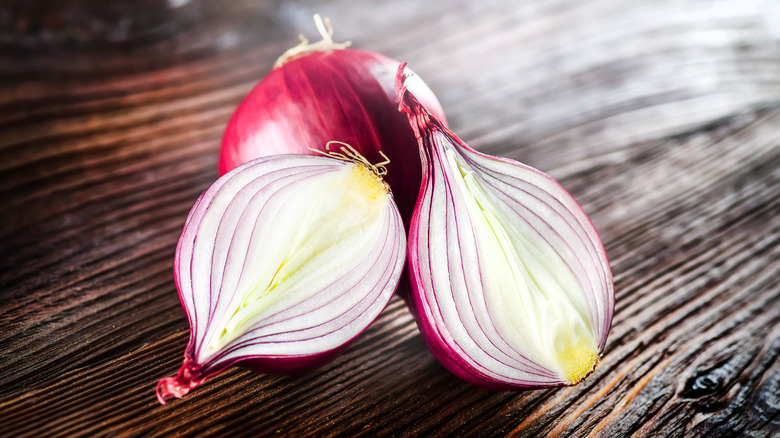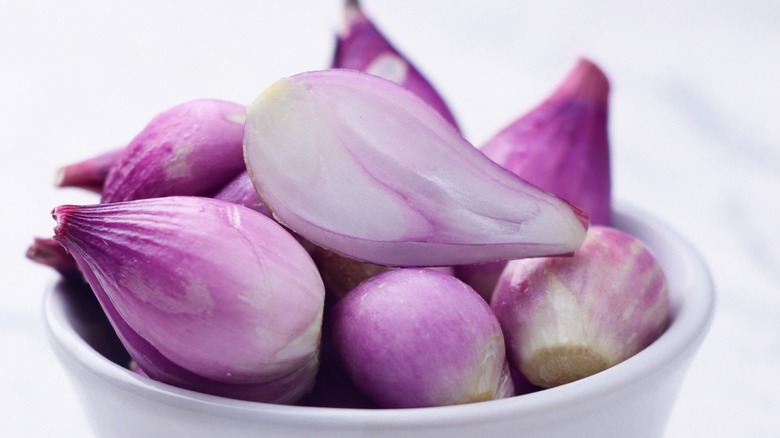Never Struggle To Peel Shallots Again With This Easy Water Hack
Shallots are a favorite in various cuisines, known for their hint of garlic and slightly sweet, oniony taste. Thanks to their mellow flavor, they are a great addition to raw salads and ideal for upgrading salad dressings. But if you've ever tackled the delicate task of peeling these teardrop-shaped beauties, you'll understand the struggles many cooks face. Their thin, papery skin seems to cling to the flesh as if glued on, which often ends in frustration and wasted shallot.
If you're fed up with picking away at each layer or accidentally slicing off more of the shallot than intended in a bid to peel these oniony veggies, then this water hack is perhaps the solution you've been looking for. All you need is a bowl, boiling water, and a few minutes of waiting, and the shallot peels will be sliding off almost effortlessly.
Shallots, like their onion cousins, have a protective skin that responds remarkably to heat. When soaked in boiling water, the tough outer layers of the shallot soften, making the peeling process not only smoother but also much quicker. It transforms an otherwise meticulous chore into a breezy culinary step.
How to use the boiling water hack
Begin by separating the shallot cloves into individual stand-alone pieces. Place the shallots in a bowl and pour boiling water over them until they are fully submerged. Allow them to sit for a couple of minutes. The hot water will work its magic, softening the stubborn skins. Once they've had their hot water soak, give them a quick rinse under cold water to stop any residual cooking process that the hot water might have initiated, ensuring your shallots remain fresh and crisp.
Now retrieve the shallots, trim off the stem and root, and squeeze each clove gently to remove the softened outer skin. You'll find that the outer layers now peel away effortlessly, sliding off like a jacket that's become too large. Once all the cloves are peeled, proceed to cut your shallots as you prefer, either dicing, slicing, or making juliennes.
By incorporating this method into your culinary routine, you'll save time and reduce the amount of shallot that goes to waste. Moreover, it's these little hacks that enhance our experience in the kitchen, making cooking more about the joy of creation and less about the hurdles.

